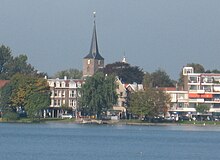
The Netherlands is both a very densely populated and a highly developed country in which transport is a key factor of the economy. Correspondingly it has a very dense and modern infrastructure, facilitating transport with road, rail, air and water networks. In its Global Competitiveness Report for 2014-2015, the World Economic Forum ranked the Dutch transport infrastructure fourth in the world.

Rotterdam is the second-largest city in the Netherlands after the national capital of Amsterdam. It is in the province of South Holland, part of the North Sea mouth of the Rhine–Meuse–Scheldt delta, via the "New Meuse" inland shipping channel, dug to connect to the Meuse at first and now to the Rhine.

The Hague is a city and municipality of the Netherlands, situated on the west coast facing the North Sea. The Hague is the capital of the province of South Holland. The Hague is the country's administrative centre and its seat of government, and while the official capital of the Netherlands is Amsterdam, The Hague has been described as the country's de facto capital.

Gouda is a city and municipality in the west of the Netherlands, between Rotterdam and Utrecht, in the province of South Holland. Gouda has a population of 75,000 and is famous for its Gouda cheese, stroopwafels, many grachten, smoking pipes, and its 15th-century city hall. Its array of historic churches and other buildings makes it a very popular day-trip destination.

Wassenaar is a municipality and town located in the province of South Holland, on the western coast of the Netherlands.
The Randstad is a roughly crescent- or arc-shaped conurbation in the Netherlands, that houses almost half the country's population. With a central-western location, it connects and comprises the Netherlands' four biggest cities, their suburbs, and many towns in between, that all grew and merged into each other. Among other things, it includes the Port of Rotterdam, the Port of Amsterdam, and Amsterdam Airport Schiphol. With a population of approximately 8.4 million people it is one of the largest metropolitan regions in Europe, comparable in population size to the Rhine-Ruhr metropolitan region or the San Francisco Bay Area, and covers an area of approximately 11,372 km2 (4,391 sq mi). The Randstad had a gross regional product of €397 billion in 2017, making it the third most productive region in the European Union, behind the Paris metropolitan area and the Rhine-Ruhr metropolitan region. It encompasses both the Amsterdam metropolitan area and Rotterdam–The Hague metropolitan area. It is part of the larger Blue Banana megalopolis.
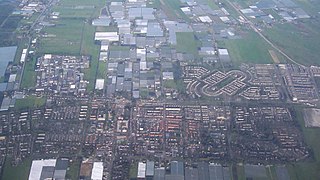
Pijnacker is a town in the Dutch province of South Holland. It is bordered Zoetermeer to the north, by Nootdorp to the northwest, by Delfgauw to the southwest, by Rotterdam to the south and by Berkel en Rodenrijs to the east.
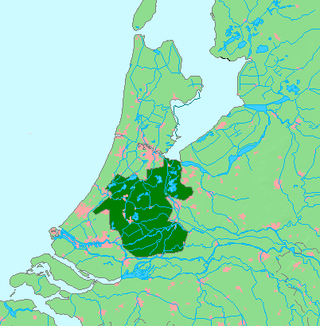
The Groene Hart is a relatively thinly populated area of the Netherlands covering much of the middle portion of the Randstad megalopolis. The major Dutch cities of Rotterdam, The Hague, Leiden, Haarlem, Amsterdam and Utrecht surround this area. Cities inside the Groene Hart include Zoetermeer, Alphen aan den Rijn, Gouda, Woerden and the smaller cities of Schoonhoven, Oudewater, Haastrecht, Nieuwkoop, Montfoort, Waddinxveen, Bodegraven and Boskoop.

110-Morgen is a neighborhood in Rotterdam, Netherlands Located in Hillegersberg-Schiebroek. The name refers to a polder of the same name from 1772, with a surface area of 110 morgen.

Kleiwegkwartier is a neighbourhood quarter in Rotterdam, Netherlands. It is in the southern part of Hillegersberg with origins dating from the early 1600s.

The Government of Rotterdam is the government of the municipality and city of Rotterdam in the Netherlands. Most of the inhabitants live in the city of Rotterdam, but the municipality also covers a number of small villages, and other parts of the local government, such as Rozenburg, cover an even larger area.
The following is a timeline of the history of the municipality of Rotterdam, Netherlands.

Nord Anglia International School Rotterdam (NAISR) is an International school in Hillegersberg, Netherlands, an area of Rotterdam. The school educates students from 3–18 years of age and has three academic areas: Early Years, Primary School and Secondary School.

The Japanese School of Rotterdam is a Japanese international school in Hillegersberg, Rotterdam.
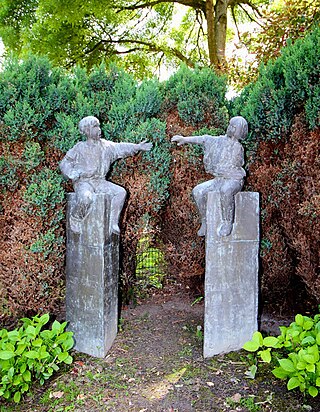
The William K. Gordon Scholarship Fund is a Dutch Foundation set up in the early 1970s to promote international education in Rotterdam, the Netherlands.
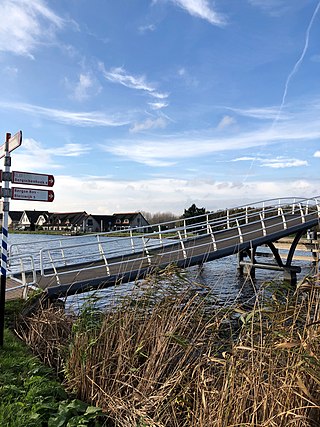
Rotte is a vicinity in the municipality of Lansingerland, in the province of South Holland, Netherlands. It used to be part of the former municipality of Bergschenhoek and is located opposite Rotterdam Ommoord.
Valkenbos, also written as Valkenbosch, was a 18th-century fluyt of the Dutch East India Company.

St Hildegard's Church is a Roman Catholic church in the Oude Noorden in Rotterdam, Netherlands.




![Period drawing of the early layout and form of the Huis ten Berghe [nl] in Hillegersberg Tekening van het slot - Hillegersberg - 20112819 - RCE.jpg](http://upload.wikimedia.org/wikipedia/commons/thumb/b/b1/Tekening_van_het_slot_-_Hillegersberg_-_20112819_-_RCE.jpg/220px-Tekening_van_het_slot_-_Hillegersberg_-_20112819_-_RCE.jpg)

